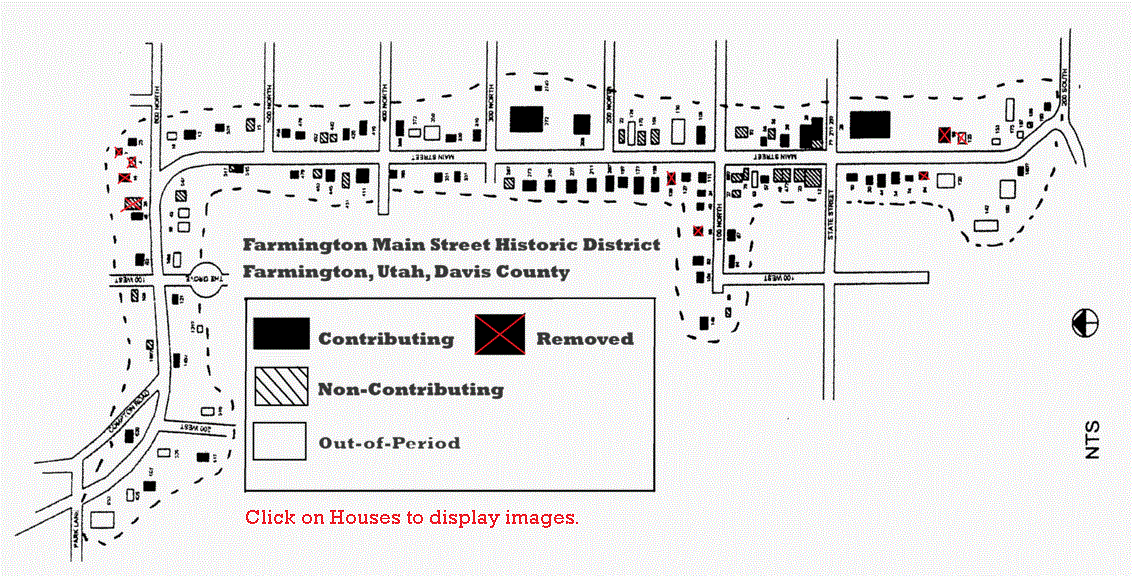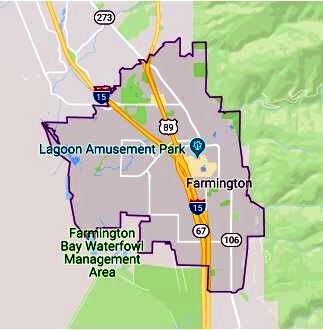


|
The Farmington Main Street Historic District is locally significant, both historically and architecturally, under Criteria A and C. Under Criterion A it reflects the settlement and growth of Farmington and the shift in the economy of the town from a small Mormon farming village to a county commerical center and then a suburban small town. The district area contains the best representation of buildings reflecting the historical development of the city of Farmington. Under Criterion C, the district is significant because of the variety and concentration of contributing historical commercial, public, institutional and residential architecture. The period of the significance dates from c. 1853 to 1961, and the range of architectural styles and types reflect the growth of the community and the change in influences as the community became less isolated. Early buildings were constructed with locally available materials (stone, adobe, log) in spare vernacular Classical styles. The railroads brought a greater range of materials and styles in the Victorian age. By the early twentieth century styles were representative of trends across the state of Utah. The district area has the most historically intact collection of buildings in Farmington City, and maintains a cohesive historic streetscape with little modern infill between the historic buildings.

|
Farmington is located in Davis County, Utah, on a narrow flat strip between the eastern shore of the Great Salt Lake and the steep foothills of the Wasatch Mountains, nineteen miles from the city of Ogden to the north and seventeen miles from Salt Lake City to the south. The Farmington Main Street Historic District is the historic core of the city, comprised of the variety of buildings supporting the life of a small city : single-family houses and multi-family apartment buildings as well as agricultural outbuildings, historic commerical, civic and ecclesiastical buildings.
Two buildings within the district are listed individually in the National Register of Historic Places. The Farmington Tithing Office was built in 1907 at 108 North Main Street and was listed in 1985 (85000686). The Hector C. Haight House at 208 North Main Street was built c. 1857 and was also listed in 1985 (85001141).
The historic period covers the time from the construction of the earliest know extant building in Farmington in 1853 to 1961. Main Street is the major north-south street in Farmington and also State Highway 106 in this section, the historic route between the larger cities of Salt Lake and Ogden. The Sycamore tree-lined district contains buildings from the entire settlement history of Farmington in a variety of styles and types ranging from pioneer vernacular small houses to the recently constructed City Hall. The two-lane Main Street has sidewalks, curbs and gutters and on street parking. The street is lined with mature deciduous trees, predominantly sycamores. The district retains its overall historic feeling and association in spite of a scattering of out-of-period structures.
Special thanks to Beatrice Lufkin for allowing us to use some of her National Register descriptions on this site.
For more information, click here or the History option above.
